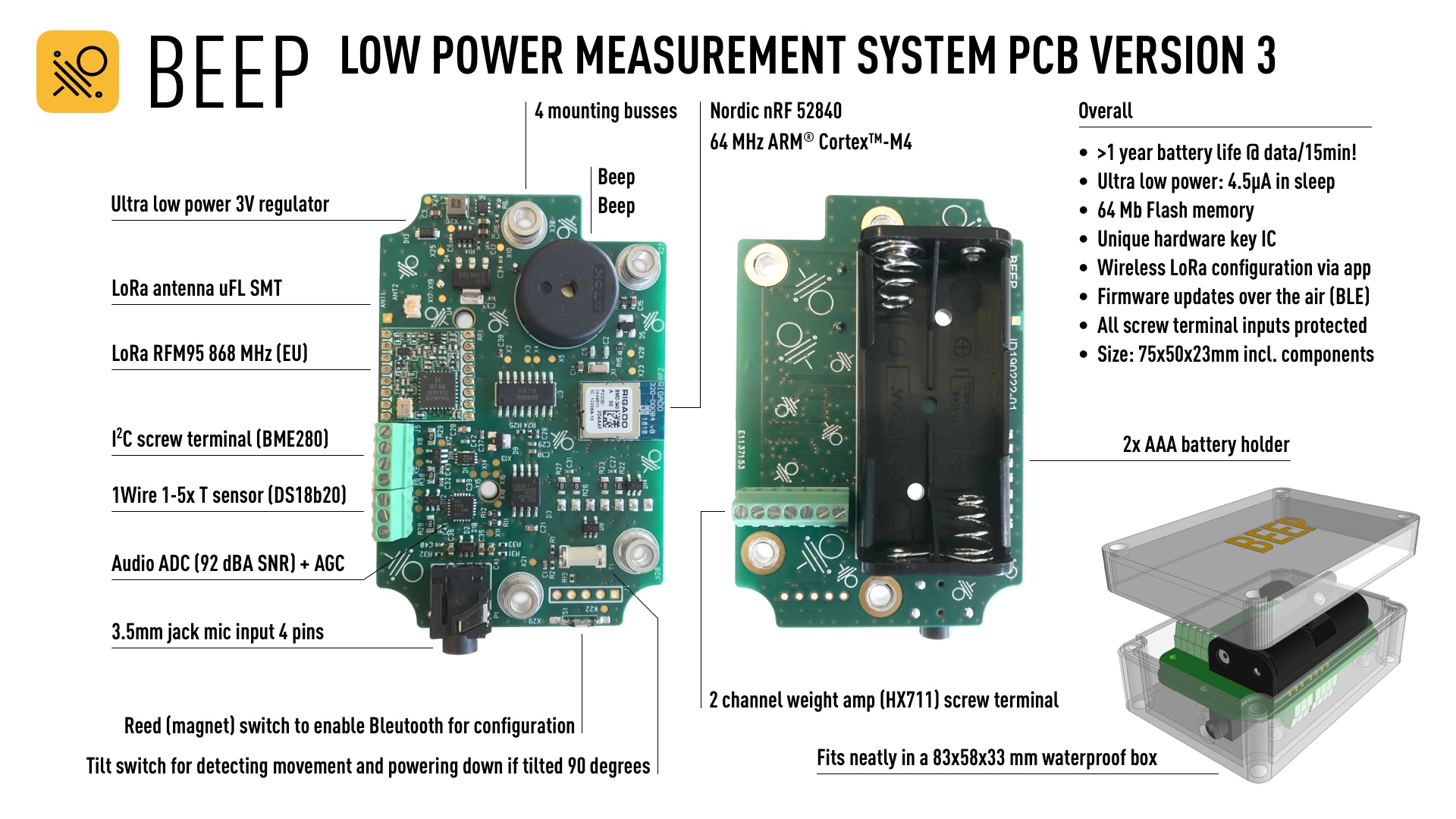With the Beep foundation we developed a (soon to be) open source PCB together with the low power and LoRa hardware specialists at Ideetron. The PCB has a lot of features that might interest you if you would like to have an affordable ultra low power bee hive measurement system.

The Beep PCB v3 has the following features:
- Nordic nRF 52840 64 MHz ARM® Cortex™-M4 processor (with Bluetooth 5 and Zigbee on board)
- LoRa RFM95 868 MHz (EU) add-on
- I2C screw terminal (BME280 supported out of the box)
- 1Wire screw terminal for multiple temperature sensors (1 to 5x DS18b20 supported out of the box)
- HX711 weight amp on board with 7 port screw terminal (incl. shield to GND)
- High quality audio ADC (92 dBA SNR) with Auto Gain Control (max 96 kHz sampling rate)
- 3.5mm jack mic input 4 pins
- Reed (magnet) switch to enable Bleutooth for configuration
- Tilt switch for detecting movement and powering down if tilted 90 degrees
- Buzzer for Bluetooth/Tilt/Reed switch interaction user feedback
- 64 Mb Flash memory
- Unique hardware key IC
- Wireless LoRa configuration via Beep configuration app with Bluetooth
- Firmware updates over the air via Bluetooth
- All screw terminal inputs protected
- 4 mounting busses for 83x58x33mm standard waterproof plastic casing
- Size: 75x50x23mm incl. components
- Ultra low power 3V regulator, 4.5μA in sleep
- Much more than a year of battery life when transmitting LoRa data each 15 minutes!
BTW: we will launch a Kickstarter campaign for the Beep measurement system v3 at the 9th of November 2019, in which you can also order this PCB as a separate pledge  Check https://beep.nl/measurement-system for more info.
Check https://beep.nl/measurement-system for more info.